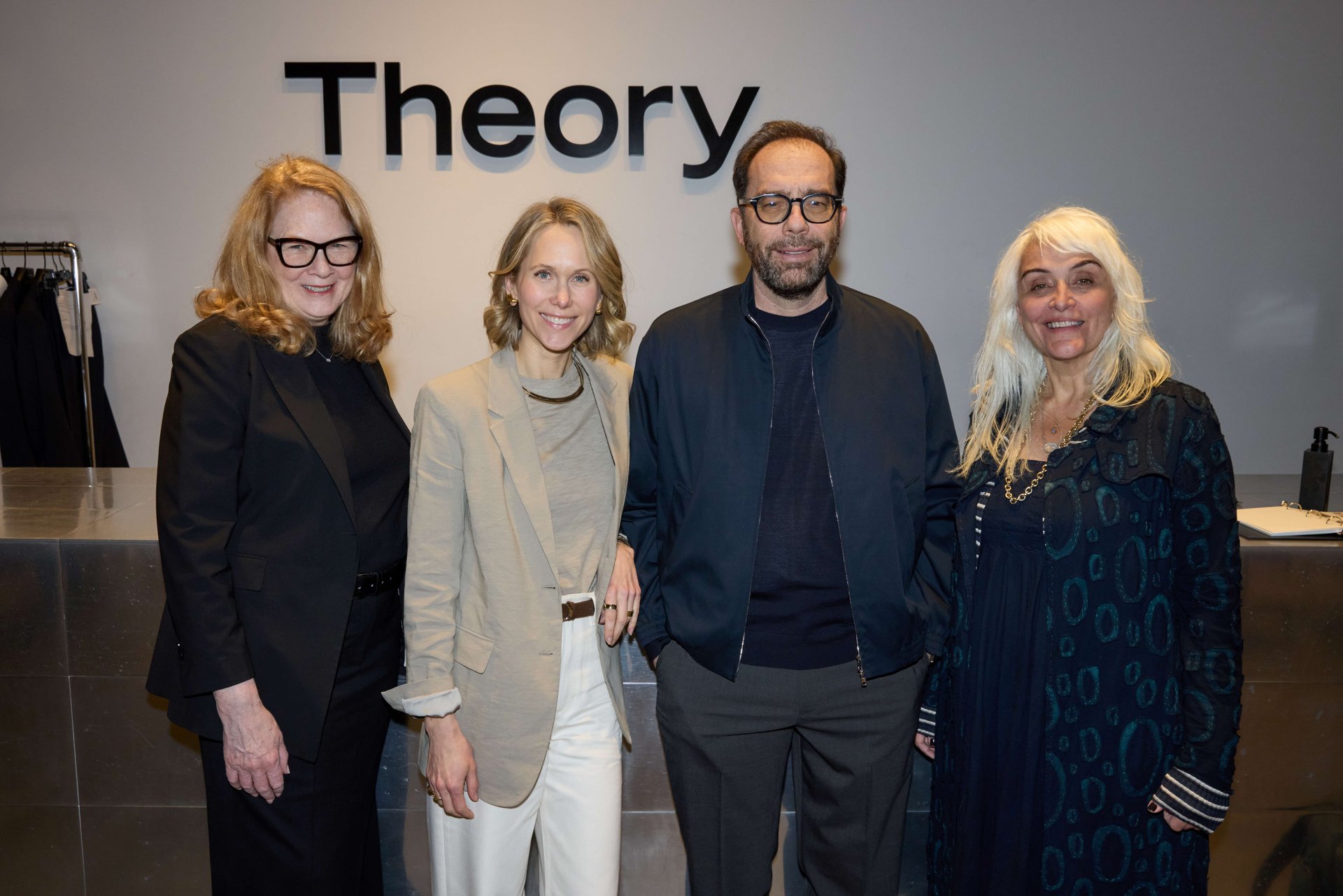Good Talks: Circularity, Considered
April 24, 2025
Melquan Ganzy


Wendy Waugh, Indre Rockefeller, Marco Mantellassi, and Natalie Chanin.
As the sun set over the Meatpacking District at Theory on Tuesday evening, fashion leaders and sustainability educators gathered for Good Talks: Circularity, Considered, the fourth session in the conversation series hosted by Theory and the CFDA.
The evening also celebrated Pratt Institute MFA students who partnered with Theory to create innovative designs using repurposed materials.
Moderated by Wendy Waugh, the conversation underscored the power of community and the urgency of environmental justice through education and collective action. The panelists – Indre Rockefeller, founder of The Circularity Project; Marco Mantellassi, CEO of Manteco; and Natalie Chanin, founder and creative director of Alabama Chanin and Project Threadeasy – shared rich insights on the purpose and practice of circularity — rooted in experience, intention, and a drive for systemic change.
Wendy Waugh: What is circularity? How does it manifest in your work?
Indre Rockefeller: What is it not? It’s not linear. Circularity challenges us — it’s a fundamental systems shift where products stay in existence. It requires cooperation and deep consideration. You have to think about the next usage at the beginning, even before designing.
How do we make things that last longer — things that are made to be repaired, repurposed?
Natalie Chanin: Our work begins with farmers. The beginning and the end is the soil. Some of what we do is already happening in real life, and some things are still aspirational. Our goal is to make fabric in an eco-friendly way and use all of it through our zero-waste program.
Marco Mantellassi: Everyone used to repair old clothes and blankets because people couldn’t afford new things. What couldn’t be repaired went to landfills. We used to recycle wool, circularity isn’t a new idea.
Today, circularity is a common word, but still so important. You have to convert old materials into new products. And those new materials still need to be beautiful and high-quality. The approach must align with your practices and performance standards.
W.W.: What inspired the work you’re doing today?
I.R.: Our focus is on the design side. I once came across a statistic — 80 to 90 percent of a garment’s carbon footprint is determined at the design stage — and it was just brushed off. I never knew that. I asked fellow designers, and it sparked this idea that design is a superpower. Why couldn’t circularity be part of that power—of thinking outside the box?
There’s work to be done individually, yes. But without collaboration, we’re working in silos. None of this can be done alone.
N.C.: We realized traditional skills were dying out. We started with recycled T-shirts. Our work also involves education, collecting oral histories from textile workers, documenting their contributions to our community. Students today are increasingly interested in sustainable design.
We’ve also partnered with science and chemistry departments. Our goals include bringing textile machinery back into the country and having designers help solve the challenges around circularity.
M.M.: To be good at what you do, you have to create real impact. We focus on every step of the production process, achieving full traceability, transparency, and certifications. Our mechanical practices use less energy and water, so we reduce environmental impact. We’re also improving how people perceive the fashion industry.
We use new wool and cashmere, but with a mission: to create something that is not only sustainable, but also fashionable and beautiful.
W.W.: How do we scale circularity and expand its reach?
I.R.: We see sustainability as an overarching umbrella. But it’s important to still check the boxes of what consumers desire. Otherwise, our contributions risk going unnoticed. We have to drive awareness, how do we help consumers understand circularity and value the practice?
Anna Foster recreates looks using denim that would’ve ended up in landfills. She has a studio dedicated to repairing garments with intentional designs and strong, durable seam allowances.
N.C.: We must invest in education and community programs. It’s essential to bring crafts and trades back into schools so people can see and experience the value of circularity. I’m very optimistic about where this can go.
M.M.: This new generation has the power to trace a product and understand the entire supply chain. It’s a good time to build more conscious businesses, ones that focus on both quality and price. The fashion industry is tired. Consumers deserve to know what they’re buying into, then they can decide.
Our team is speaking to students directly, hoping to influence the next generation of designers and changemakers.
W.W: How can brands communicate the importance of circularity to consumers?
I.R.: We have to make it sexy, make it aspirational. It’s all about telling the right stories.
N.C.: Making the work visible to consumers will help them understand and value the process — especially the people who are part of making it happen.
M.M.: We have to tell stories that go beyond the fabric. Brands should be able to share their full story, from the beginning to now, so people understand what’s happening and how we’re shaping the future of fashion.